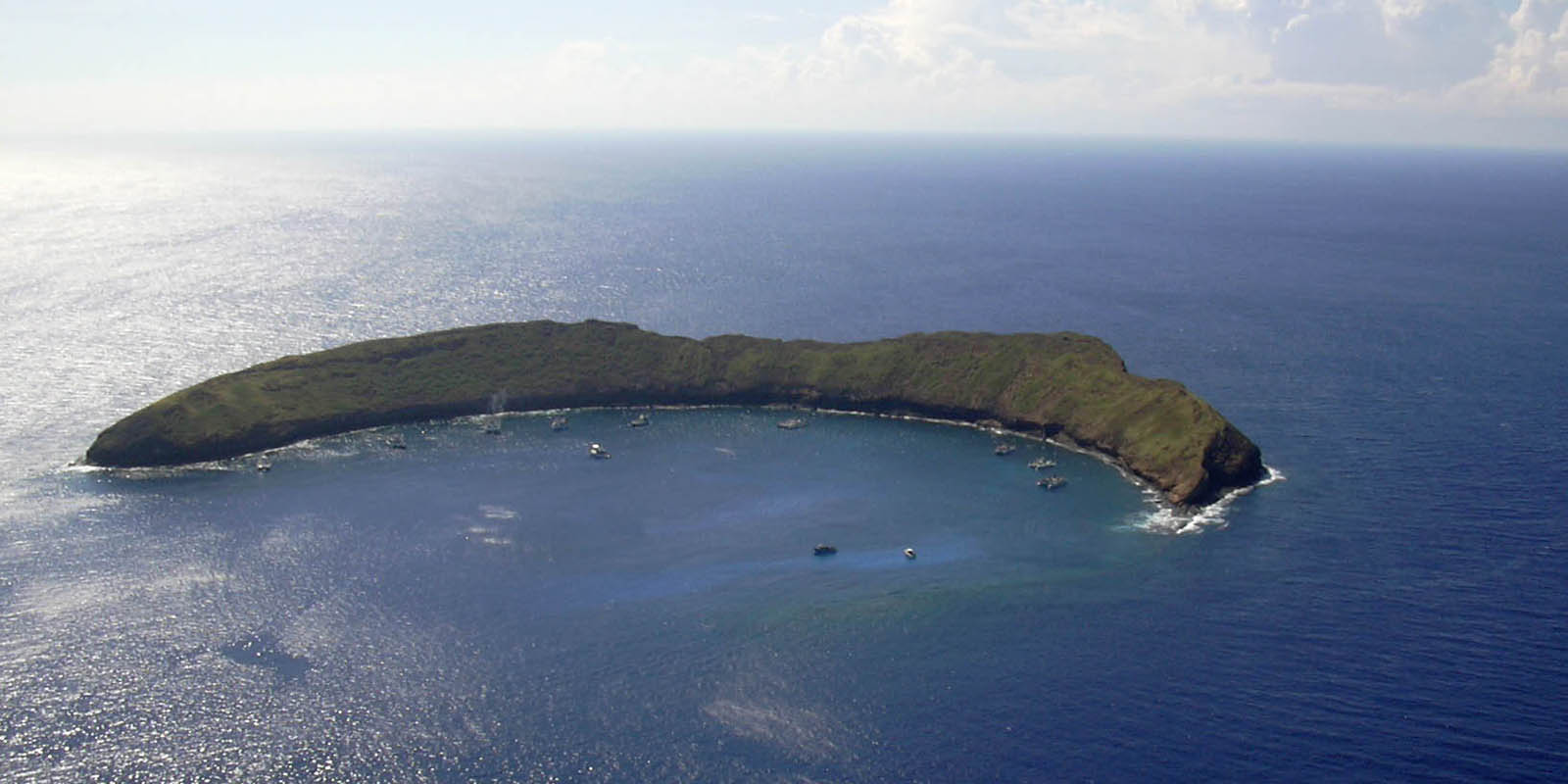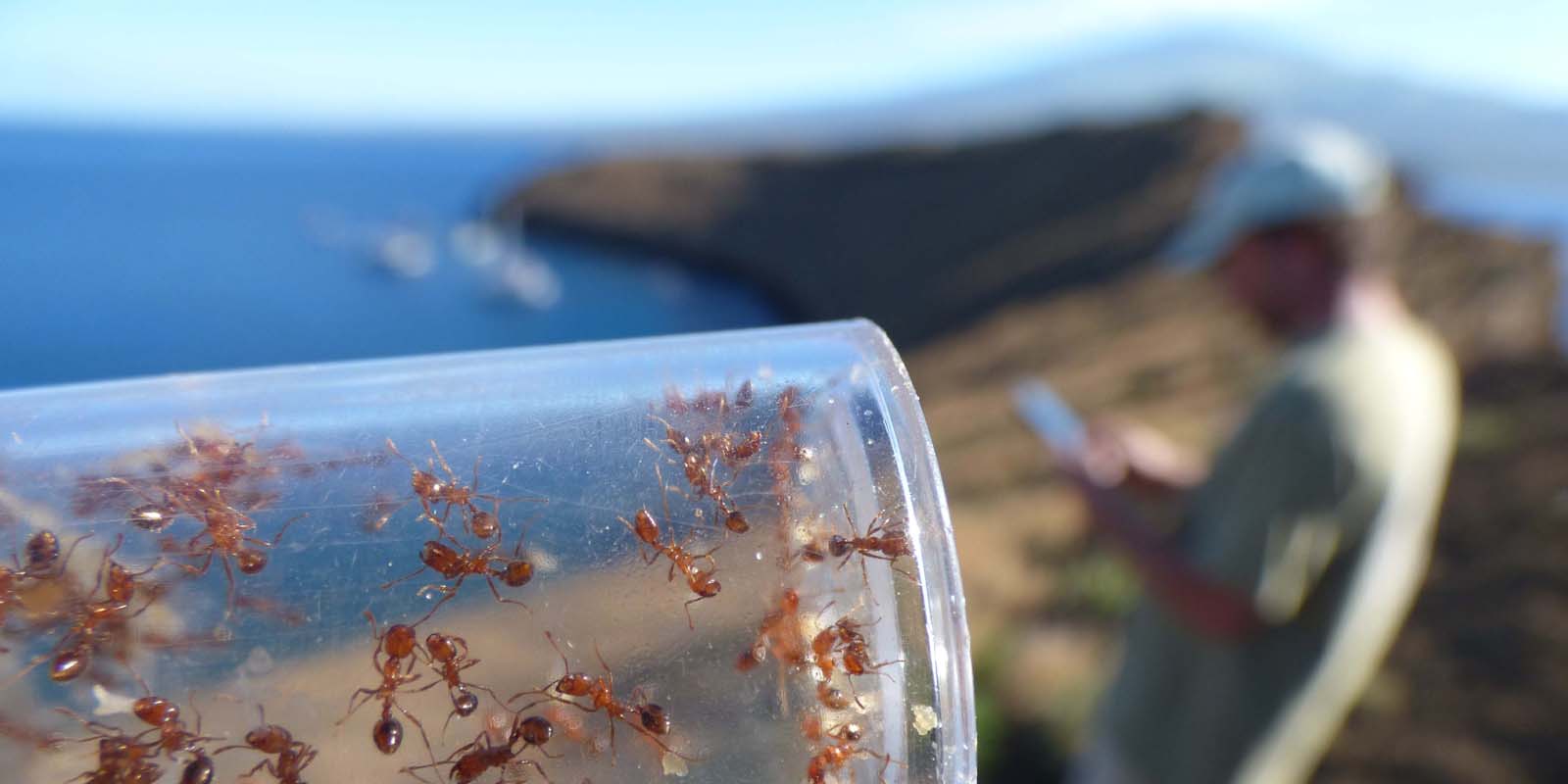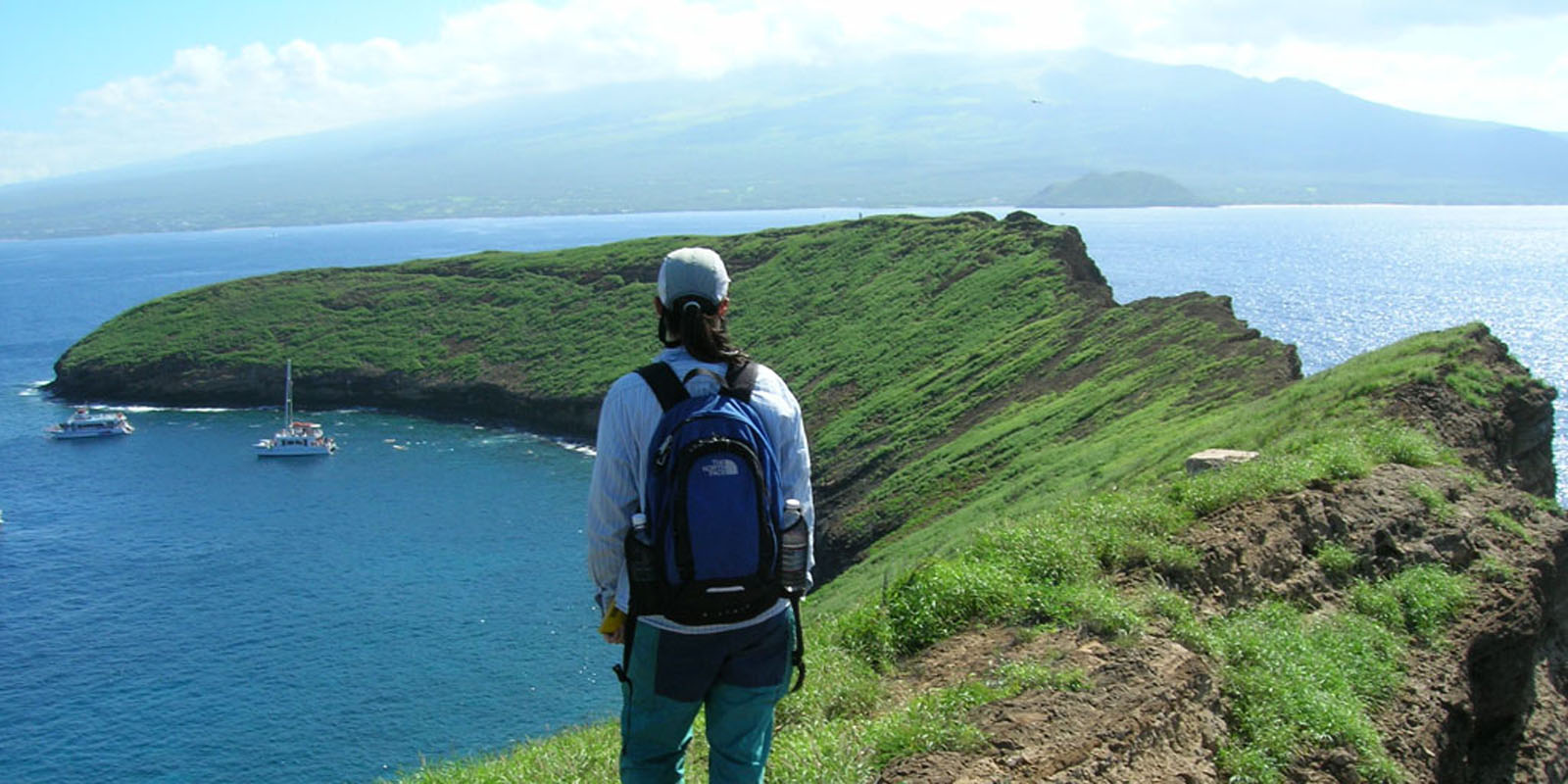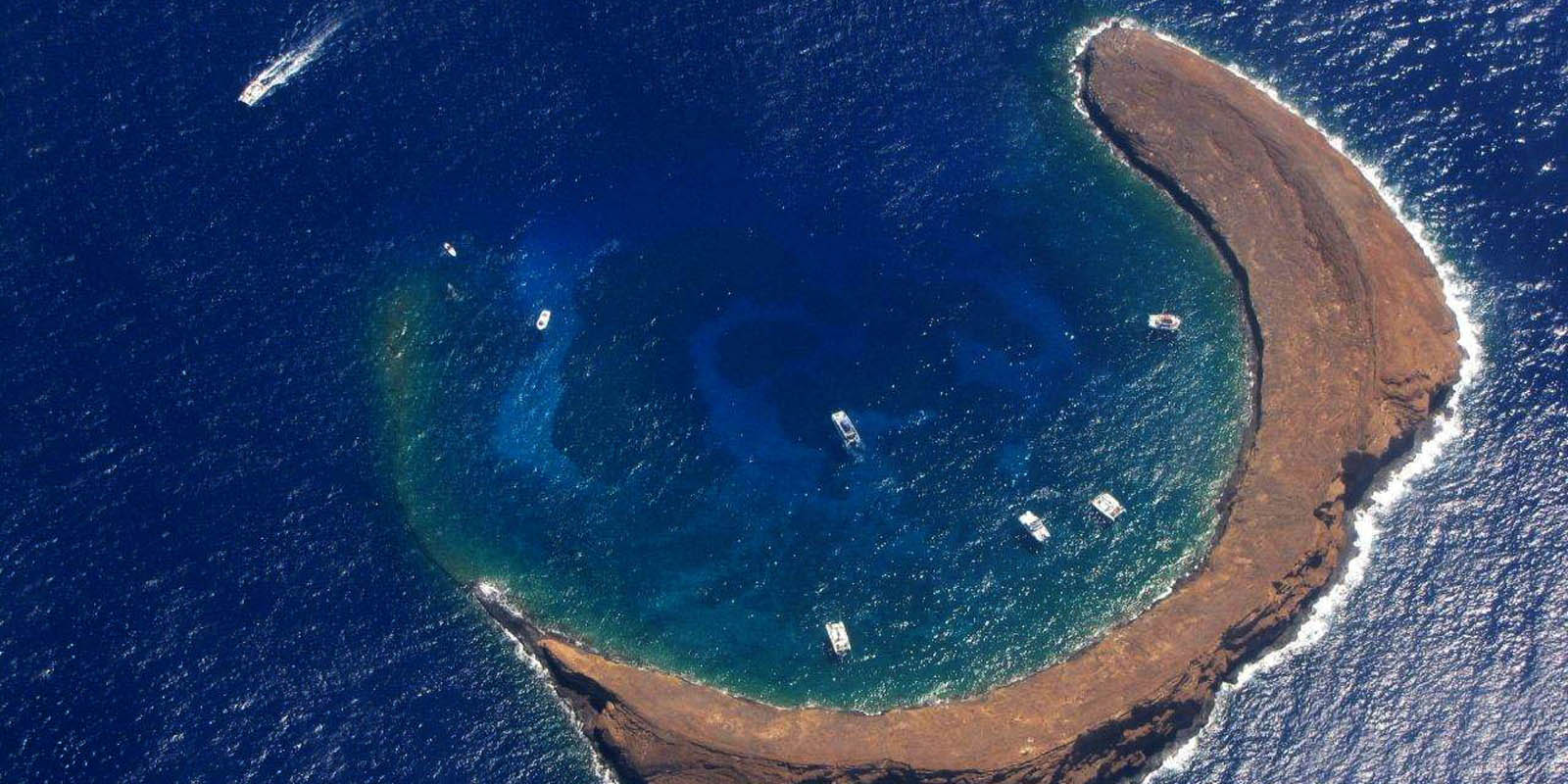Geology + History
Within the cove of Molokini Crater is the submerged floor of the volcano's crater. This inner cove area provides protection from the open ocean so beginning snorkelers can easily enjoy the crystal clear waters and abundance of marine life.
The unique crescent shape of Molokini crater creates a natural barrier that provides protection from waves and open ocean currents. A multitude of marine species thrive on the coral reef at Molokini including many species that are not commonly seen at the nearshore diving spots.
The deeper ocean around Molokini Crater once supported an abundance of black coral but this is no longer the case due to extensive harvesting of the species in the 1950s. The taking of marine life at Molokini is no longer allowed.
Molokini Crater does not have any sand beach. Instead the edges of the cove slope downward to a depth of about 100 feet where the rock then drops off sharply.
At the bottom of Molokini Crater are patches of sand and coral as well as boulders of basalt, a type of rock that is formed by volcanic activity. From the northwestern shoreline of Molokini and extending northward is a relatively shallow coral reef with a depth of about 30 feet.
On the south side of Molokini Islet is a steep rock face that descends to more than 200 feet below sea level. Black coral grows in small colonies along this rock wall, and there are also outcroppings of rock as well as crevices in the wall where a variety of fish and other marine life may be seen.
One of Hawaii's best scuba diving and snorkeling sites, Molokini Crater is located about three miles off Maui's southern coast in the Alalakeiki Channel between Maui and the island of Kahoolawe. Graced with clear blue water, the protected reef area at Molokini Islet is abundant with sea life.
Though the crater of Molokini is a very calm place today, the history of this volcanic caldera was one of massive and violent eruptions of lava. According to scientific studies utilizing the technique of potassium-argon dating, the eruptions of Molokini occurred about 230,000 years ago.
The result of Molokini's eruptions is a huge cinder cone that rises above the ocean's surface. The cinder cones is topped by a crater measuring about about 1,800 feet in diameter. The northern rim of the crater is beneath the sea and so the crater is flooded with water.
Formation of Molokini Crater
Many thousands of years ago, deep on the ocean floor not far from the island of Maui, a volcano began to erupt. This undersea volcano was located along Haleakala Volcano's southwest rift zone. After millennia of eruptions this undersea volcano finally rose above the surface. When the volcano's peak erupted above the water it shot rocks and cinder into the air. The result of all of these eruptions is the Molokini Crater we know today, which is one of the best diving spots on the planet. The summit crater of Molokini is thought to have formed relatively early in the life of Haleakala Volcano, and may be older than Haleakala's summit which reaches 10,000 feet above sea level. Now rising above the sea is just the summit of a huge undersea volcanic mountain, more properly known in geologic terms as a cinder cone. The cone rises about 500 feet from the flank of Haleakala Volcano. Eventually this active cinder cone, which, had finally risen above the ocean's surface, ceased to erupt lava. Only the crater of Molokini now remains protruding above the sea. The half-submerged summit crater of Molokini stands 160 feet above sea level. The crescent-moon shaped crater creates a welcoming area for scuba divers and snorkelers as well as a thriving habitat for native Hawaiian birds, fish, and other marine species. While there are many cinder cones found on the ocean floor around the Hawaiian Islands, it is rare for a cinder cone to grow tall enough to rise above the ocean's surface like Molokini. The last eruption is thought to have occurred about 230,000 years ago.
West Maui rift
??????
History
Creation – Scientific
The sunken volcanic cinder cone of Molokini Crater was formed as the land mass of Maui moved over hot spots in the Earth's tectonic plates. At this time, the volcanic eruptions occurred in many spots on the southwest side of Maui. Though previously thought to have erupted in the last 50,000 years, more recent studies find that it was more likely an older eruption that created Molokini Crater some 230,000 years ago. A graduate student at Kyoto University in Japan, Yoshitomo Nishimitsu, along with scientists at the Hawaiian Volcano Observatory concluded through potassium-argon dating that it indeed erupted at the earlier date. Molokini likely erupted along with other relatively concurrent eruptions along Haleakala's southwest rift zone.
Creation – Hawaiian
Though the stories vary, we find the general theme is the same. The fire goddess, Pele, was in love with a prince (whom also happened to be a gecko or Mo'o.) The prince fell in love with another woman, and in her fury, Pele took her revenge. Depending on the source, she cut either the Mo'o or the woman in half. The head of the body became Pu'u Olai, which is the cinder cone mound on the north end of Makena Beach (Big Beach.) His/her body became Molokini Crater. The stories differ, but the fact remains: You don't mess around with Pele's emotions.
Fishing Grounds
Due to the protected nature of the reef at Molokini Crater, this area attracts a number of fish. Proof has been found (in remnants of ancient Hawaiian fishing gear) that the Hawaiians had been visiting Molokini for many years to fish the abundant waters as well as harvest eggs from the many birds living on the island atoll. It's unsure exactly how long they had been visiting Molokini. Polynesians are thought to have first arrived within the Hawaiian island around 500 AD. We assume they visited from around this time all the way up to the bombing from the US military (which obviously made it much less attractive to risk fishing.
Destruction
Once the United States entered into World War II, the military allowed Molokini Crater to suffer the same fate as it's neighbor island Kahoolawe by thoroughly bombing the area for practice. The unique shape of Molokini was found useful due to it's long shape and similar slender target area of a submarine or battleship. After bombing had stopped, the area was pilfered of its black coral by collectors. Since then, both in 1975 and 1984, unexploded ordinance was detonated by the US Navy at Molokini Crater. In doing so, the US Navy destroyed large amounts of fragile corals on the reef. During World War II, Molokini was repeatedly bombed by the United States military as the islet was used for target practice. It was said that the shape of the crater resembled a battleship. Other damage to the area occurred in the 1950s when extensive harvesting of the black coral around Molokini occurred.
Unexploded munitions were detonated within the crater in 1975 and again in 1984, destroying large sections of Molokini's coral reef. Molokini's status as a highly protected preserve area now helps in the recovery of the habitat and the various native species living in the land and waters of the islet. These native Hawaiian species include seabirds as well as marine species.
Conservation
Finally, the public was heard, and the US government deemed Molokini Crater and the surrounding 77 acres a Marine Life Conservation District and Bird Sanctuary. The reef has restored its health (to a degree of what it once was), and the fish have come back in droves. Now the island is used primarily as a tourist destination for snorkeling, scuba diving, and snuba diving. Access for boats has been restricted to a certain amount of moorings. There is still some controversy as to whether the abundance of snorkelers is damaging the reef, and whether the constant visits of swimmers is affecting the marine life's natural response to human contact.





